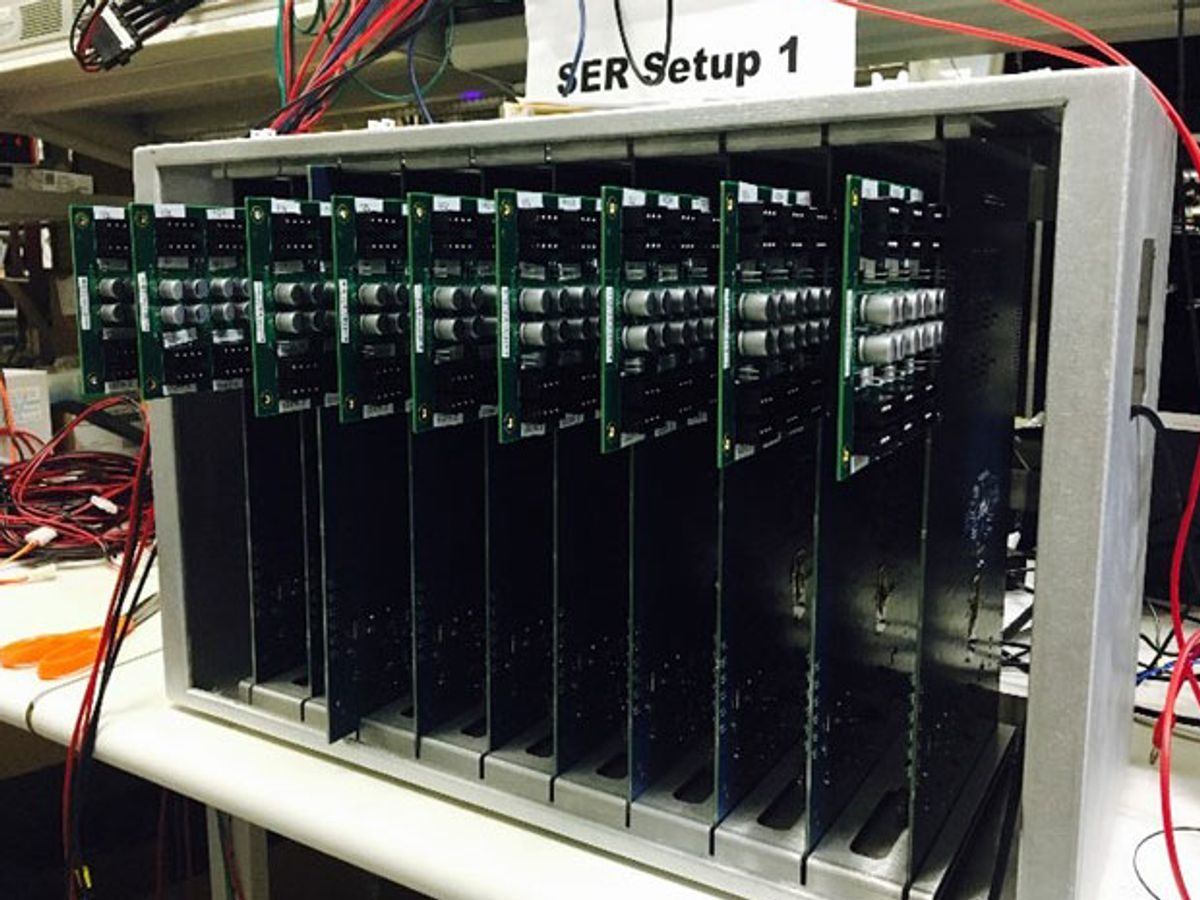For a short time, it looked like the worlds electronics would be safe (well, safer) from radiation. With the switch from planar transistors to FinFETs, ICs suddenly became naturally resistant (literally) to having their bits flipped by a neutron splashing into them and blasting lose a small cloud of charge. But two things are now making them vulnerable again: One is the move to operating at voltages so low, that it’s easier for a pulse of radiation-induced charge to flip a transistor on or off. The other is how the unprecedented density of those transistors is giving radiation more targets than ever.
Engineers at the University of Minnesota are nearing a solution that could help bring down the rate of so-called logic soft errors—signals temporarily flipped by a radiation strike. It’s a circuit called a back-sampling chain that has, for the first time, allowed them to reconstruct the strike pulse—called a single event transient—resulting from the radiation strike. In research to be presented in June at the IEEE VLSI Symposia in Kyoto, Kim’s team shows that the back-sampling chain (BSC) circuit—a kind of cross-connected chain of inverters—can detect orders of magnitude higher number of strikes compared to previous approaches.

“There hasn’t been a way to visualize these strike pulses,” says Chris H. Kim, the electrical engineering professor at the University of Minnesota who led the research. “The back-sampling chain circuit can measure the response of the circuit to the radiation event. We can also back calculate the strike current induced by each particle.”
Kim’s group is using the neutron strike data collected from the BSC circuit to develop a design tool that will help engineers avoid low-voltage designs that would be too sensitive to soft errors. There are no tools right now “that combine radiation data with circuit analysis and system design,” says Kim.
The BSC could also be integrated into chips destined for complex systems in spacecraft and other things that operate in harsh environments. The goal here is to collect data on the system in operation. “Once you have that data, you can map it to system level failure and use it to fine tune the supply voltage or clock frequency,” says Kim.
Samuel K. Moore is the senior editor at IEEE Spectrum in charge of semiconductors coverage. An IEEE member, he has a bachelor's degree in biomedical engineering from Brown University and a master's degree in journalism from New York University.



